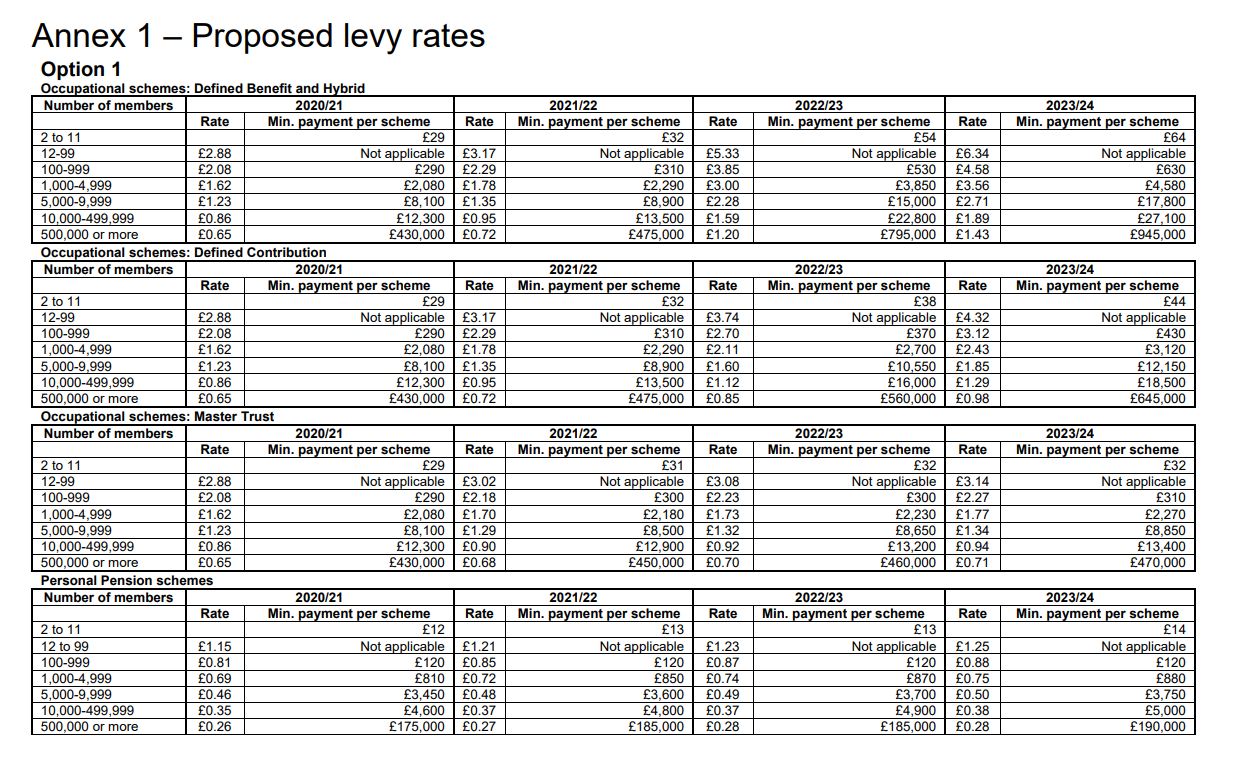On the go: A government consultation has warned that the general levy on schemes used to fund the Pensions Regulator will need to rise steadily to reverse a widening deficit, but floated a fairer methodology for master trusts.
The general levy is paid by all registered occupational and personal pension schemes, and funds arm’s-length bodies like the regulator, as well as the Pensions Ombudsman and the Money and Pensions Service.
A combination of a 12-year freeze in levy rates, reductions in 2012 and for large schemes in 2017, along with widened mandates for the funded bodies, has led to a hole opening up in the Department for Work and Pensions’ finances.
Attempts to plug this gap were foiled when, after vociferous opposition from master trusts, a 10 per cent rise in rates was abandoned in March this year. Master trusts say they are unfairly targeted by the current regime, due to their large memberships, low average pot sizes, and the payments they already make in order to gain authorisation and undergo regulatory supervision.
Nonetheless, the DWP said that having failed to identify any areas where current spending on regulation is unwarranted, rates need to rise.
The government’s preferred option is to calculate levy payments differently for defined benefit, defined contribution, master trusts and personal pension schemes. The levy would still be based on the number of members in a scheme, but different rates would account for the increased level of resource needed to regulate and support different sectors.
DB schemes and DC plans that do not qualify as a master trust would face a hike of 10 per cent for 2021, while master trusts and personal pensions would only have to pay an additional 5 per cent. The government said this would begin the process of balancing the books without putting undue strain on schemes during a difficult time.
However, sharp increases are forecast in following years, with the initial hike and increases for an additional three years set to be introduced in the same regulations. DB schemes will see their rate more than double from 2020-21 to 2023-24.

Source: Department for Work and Pensions
Pensions minister Guy Opperman said: “Changes within the pensions industry and regulatory landscape have resulted in growing responsibilities for the DWP’s pensions bodies, putting additional pressure on their expenditure.
“While the government has protected the industry from increases in the levy over a number of years, we can no longer avoid the fact that action is needed to bring levy rates back into balance with expenditure,” he added.
The government also outlined less preferred options, such as increasing the levy with a carve-out for personal pension schemes and master trusts only. The DWP said this method would not reflect the complexity involved in dealing with the DB universe.
A third option would see the existing system retained but levy rates increased, an option that has effectively been precluded by the government’s decision not to implement this solution this year, having received complaints about the inequity of the rates structure.
The consultation also hinted that the levy funding the Fraud Compensation Fund, which was greenlit for use in scams cases in November, may have to increase to meet a large number of upcoming claims.






















